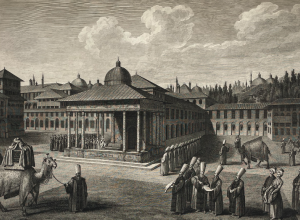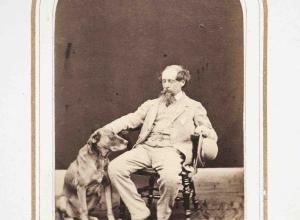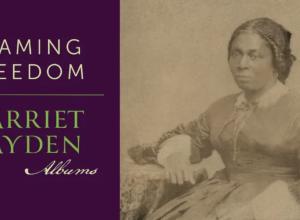Exhibition of 18th-Century French Printmaking at Metropolitan Museum Opens Oct. 1
During the 18th century in France, a great number of artists—painters, sculptors, draftsmen, and amateurs—experimented with etching, a highly accessible printmaking technique akin to drawing. Featuring 130 works by such artists as Watteau, Boucher, Fragonard, Hubert Robert, and many others, Artists and Amateurs: Etching in 18th-Century France will be the first exhibition to focus on original etchings created by painters and amateurs in 18th-century France. It will present a fresh exploration of how etching flourished in ancien régime France, shedding new light on artistic practice and patronage at that time. During a period when artists strained to navigate the highly regulated Académie Royale and the increasingly discordant public spheres of the marketplace and the Salon, etching afforded them stylistic freedom and allowed them to produce exquisite works of art in a spirit of collaboration and experimentation. The exhibition will present etchings, plus a few drawings and preparatory sketches, from the Metropolitan Museum’s rich holdings, as well as loans from North American museums and private collections. The selection of prints includes a number of rare or unique examples.

The exhibition is made possible by The Schiff Foundation.
While printmaking was dominated by professionals for much of its early history, the technique of soft-ground etching—where a plate was coated in varnish and could then be drawn on with a metal stylus—transformed the practice from a specialized technique practiced by an exclusive group with extensive training, to a highly accessible art form. Some artists, like Antoine Watteau and François Boucher, encountered the process within the thriving commerce of the Paris print trade, where a painter would sometimes be asked to make a preliminary sketch on a prepared copper plate to guide the professional printmaker who would later reinforce the design with engraving. Others, like Jean-Honoré Fragonard and Hubert Robert, first experimented with the technique during their student years in Rome, where Piranesi’s studio was in close proximity to the French Academy. For some, like Jean-Baptiste-Marie Pierre, etching formed a bridge with amateurs, wealthy members of the court or aristocracy who wanted to learn etching as a cultured, leisure pursuit. Because of these relationships, the making of prints became intermingled with the collecting and studying of prints, creating an environment of cross-fertilization that led to a flourishing of the art form.
Artists and Amateurs will highlight the freedom, spontaneity, and creativity of the medium of etching in the hands of artists and collectors. Over the course of the century, etching came to be viewed not solely as a reproduction medium, but also, as a medium for original artistic expression. As the free and improvisational aesthetic of the etching process was embraced, French artists looked to 17th-century masters—such as Rembrandt in the North and Salvator Rosa and Giovanni Benedetto Castiglione to the South—for inspiration. The expressive potential of the technique was also explored in a more experimental manner by artists like Gabriel de Saint-Aubin and Louis Jean Desprez, who harnessed the inky tonalities of the medium to their personal and idiosyncratic visions. The painters who felt the urge to pick up the etching needle were drawn to the freedom and accessibility of the technique, and not necessarily focused on exploiting commercial potential. Their prints tend to be rare and are valued for their qualities of expressiveness and experimentation—in many ways the opposite of the mass production and technical expertise of professional printmakers like Demarteau and Bonnet.
The exhibition will also focus on the French Academy in Rome as a setting that provided the means and freedom to explore this medium; the etchings made by amateurs, both in Rome and in Paris; and, finally, the increasing stylistic engagement with past masters. Overall there will be a balance between works of the most successful painters of the period and lesser known, but equally accomplished figures, including the work of amateurs and the working relationships between them where the influence went both ways.
Artists and Amateurs will be organized thematically and will explore how, where, and why artists first learned to etch, their occasional experimentation with marketing their prints for sale, and their technical innovations as they found new ways to manipulate the medium for individual expression. Highlights include Antoine Watteau’s Recruits Going to Join the Regiment (ca. 1715-16), Jean-Honoré Fragonard’s The Satyr’s Family (1763) and The Armoire (1778), Jean-?tienne Liotard’s Self-Portrait, François Boucher’s Andromeda (1734), Gabriel de Saint-Aubin’s View of the Salon of 1753, Jean-Jacques de Boissieu’s Study of Thirteen Heads (ca.1770), and amateur Ange-Laurent de la Live de Jully’s etching after a drawing by Jacques-François-Joseph Saly of Nicolas Bremont, Cook at the French Academy in Rome (ca. 1754).
The exhibition is organized by Perrin Stein, Curator in the Metropolitan Museum’s Department of Drawings and Prints.
Exhibition Dates: October 1, 2013-January 5, 2014
Exhibition Location: Galleries for Drawings, Prints, and Photographs, 2nd floor
Artists and Amateurs: Etching in 18th-Century France will be accompanied by a richly illustrated, scholarly catalogue written and edited by Perrin Stein, with essays by Charlotte Guichard, Rena M. Hoisington, and Elizabeth Rudy. It will be published by The Metropolitan Museum of Art and distributed by Yale University Press, and will be available in the Museum’s book shops (hardcover, $60.00).
The catalogue is made possible by Karen B. Cohen.
A variety of education programs will accompany the exhibition, including a Sunday at the Met event on October 20, 2013, and a series of exhibition tours.
Education programs are made possible by The Georges Lurcy Charitable and Educational Trust.
For more information about the exhibition and its accompanying programs, visit the Museum’s website at www.metmuseum.org.















